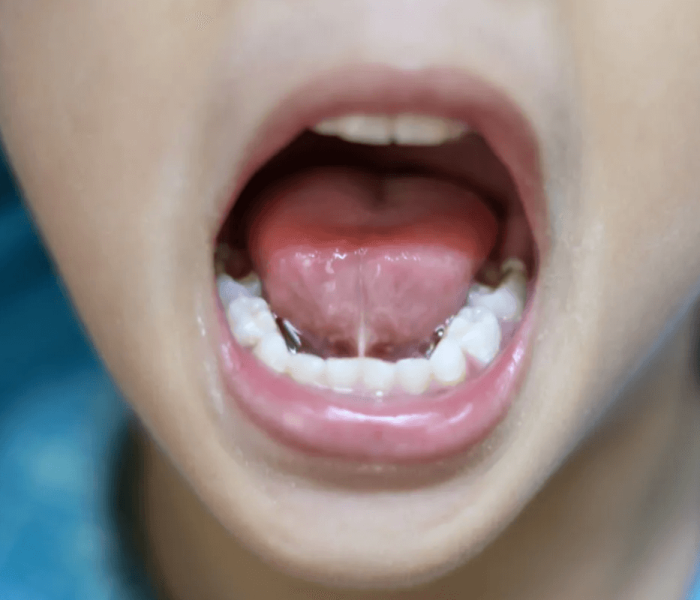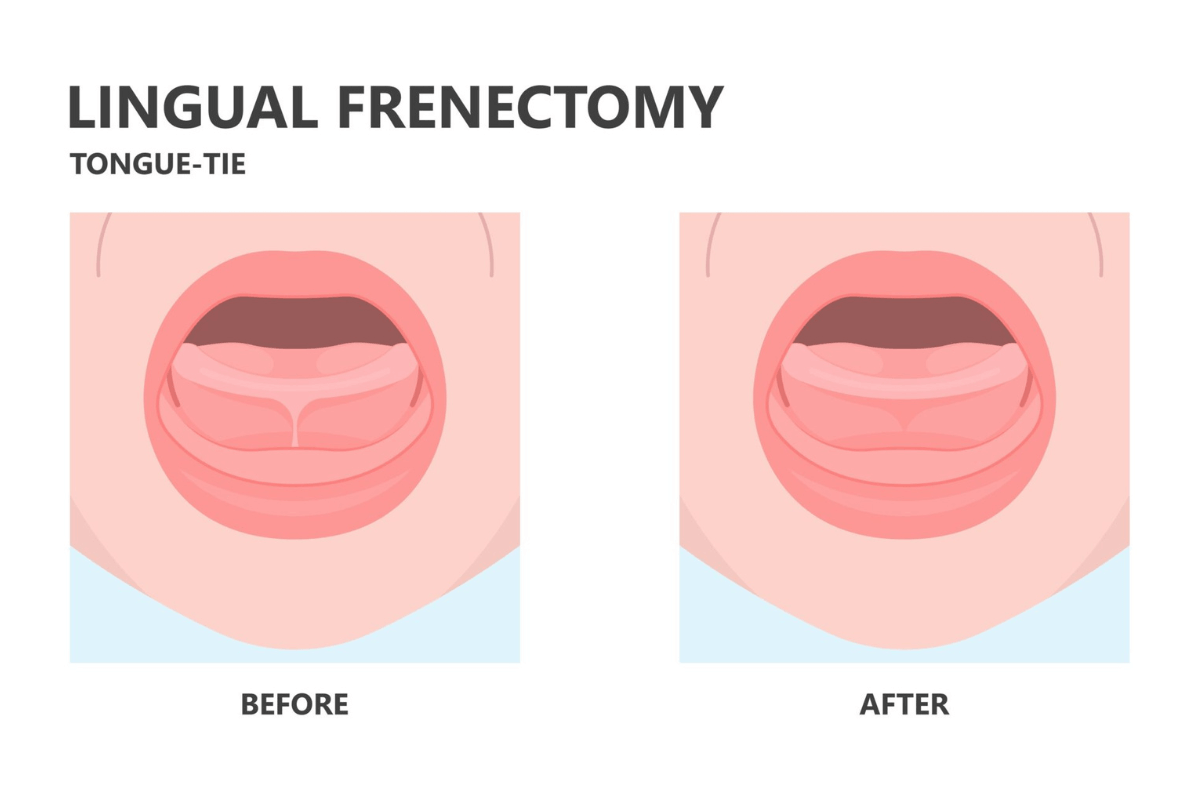What Is Tongue-Tie Laser Surgery and How It Works
Dental health problems are a significant global issue and affect the lives of 3.5 billion persons, causing significant harm in areas with lower incomes and older populations.
In this way, parents are often faced with their children’s oral health, especially with regard to problems like a tongue-tie that isn’t treated. If you’re considering a laser tongue-tie procedure for your child, you’re part of a larger group of people looking for solutions.
This guide aims to clarify the procedure and address the primary concerns parents confront. Learn everything you need to be aware of this procedure, which will help you make an informed choice for the oral health and wellbeing of your kid.
What Is Tongue-Tie Laser Surgery?
Laser surgery to tie the tongue, which is also referred to as a frenotomy or a frenectomy, makes use of a laser to break the tissue (frenulum) that holds the child’s tongue to the lower part of the mouth. This procedure cuts through the frenulum, which allows your tongue to move and not be anchored to the floor of the mouth.
In addition, the recovery period is usually shorter than traditional surgery, with the majority of patients experiencing a rapid improvement in the mobility of their tongues and function. This is especially beneficial for babies since it hardly interferes with feeding routines and decreases stress for both children and those who are parents.


What Happens After Tongue-Tie Laser Surgery?
Following the laser treatment for tongue tie, an amazing transformation occurs. This procedure, which is among the most effective treatments for tongue tie, is targeted at the tissue that is tight and restricts tongue motion.
After surgery, patients usually notice immediate relief from tongue-tie issues. They are able to speak, eat, and even breathe easier. The procedure is simple and results in little discomfort, which makes it a preferred choice to reduce the risk of tongue-tie issues. Recovery is swift, which allows people to experience greater independence in their oral movements. This easy yet transformative procedure provides a wealth of enhanced speech and food experiences that enhance the quality of living.
When Should a Child Undergo Tongue-Tie Laser Surgery?
Timing and prompt recognition of signs are crucial. The procedure is most effective when it is performed in the early years of life because it can help prevent a variety of developmental problems.
If the procedure is carried out in the early stages, it can help avoid speech and eating disorders. It also reduces the likelihood of suffering from dental issues like crooked teeth due to the tongue’s position not being correct. Additionally, early treatment can help avoid emotional and social issues later in life.
Following this process, Many children experience remarkable improvement in their clarity of speech. This improves the confidence of children and their social interaction. The aim of the procedure is to be as easy as it can be. The procedure uses a laser, which results in less bleeding and discomfort than traditional procedures.
Children typically get back to normal activities within a couple of days and noticeably improve how they eat and talk.
What Are The Signs That A Child May Need Tongue-Tie Laser Surgery?
Recognizing the indicators that a child is likely to require the tongue-tie surgical procedure is essential for their growth. Here are a few indicators that can help:
1. Breastfeeding Difficulties:
Babies with tongue ties typically struggle to grasp onto breasts. This could result in being unable to eat enough and not being able to gain weight. For instance, a child may always appear hungry. It is possible that they produce a clicking sound when feeding. Additionally, it could be a bit uncomfortable for the mother as the baby isn’t latching properly.
2. Speech Difficulties:
Children who are older and have tongue tie problems may have trouble understanding sounds such as “t,” “d,” “z,” and “s.” They may find themselves unable to comprehend words, particularly those that require more complicated tongue motions.
3. Restricted Tongue Mobility:
This is apparent when a child is unable to extend their tongue beyond its upper front teeth or move it from side to side. For example, they could be unable to bite into the ice cream cone or get food particles off their teeth by using their tongues.
4. Dental Issues:
If the tongue tie isn’t addressed in time, it may cause problems. It may cause an opening between the front teeth of the lower jaw. It can also cause problems keeping the mouth clear. This is because children cannot move their tongue in a normal manner.
Benefits of Tongue-Tie Laser Surgery?
The surgery has amazing advantages, changing lives through its easy-to-follow approach. In the beginning, the procedure helps improve breastfeeding. For children who are older and adult patients, the procedure can make a huge difference in speech.
It addresses pronunciation problems caused by limited tongue movement. It makes communication more clear and more secure. This can boost the child’s confidence in social interactions as they can interact more easily with others.
This procedure can also improve the hygiene of your mouth. With a greater range of motion for the tongue, cleaning the mouth becomes much easier, thus reducing the likelihood of having dental problems.
Additionally, the procedure is fast, with no discomfort, and the healing process is generally quick. This means less time in the hospital and a rapid return to your normal routine.
Facts About Lip Tie Laser Surgery:
If children have small or tight tissue beneath their lips, they might struggle to move their lips. The frenum tissue is located underneath the lip, and it joins with the gums on the top. Children with this condition can’t open their mouths freely. On the other hand, infants may experience difficulty nursing or creating a solid seal that allows them to seal the bottle without spilling liquid from the sides of their mouths.
Typically, lip ties are detected by the baby’s doctor, a lactation expert, or a dentist with expertise in lip ties. There are four types of lip ties: class one is fairly gentle, and the fourth class is the most serious.
It’s normal for parents to be aware of the procedure prior to performing it for their children. This is the information you should be aware of regarding a frenectomy, which is the procedure of release from tissue that creates the tongue tie or lip tie.
The Laser Is Highly Precise:
When it is about lip tie procedures, parents would like their children to go through an exact procedure. Lasers are more accurate than scissors, scalpels, or the tools employed in fewer procedures for tying the lips. Along with its precision, it promotes bio-regeneration and healing. This means that the chances of bleeding excessively, infection, and severe postoperative pain are less.
The Surgery Is Painless And Causes No Discomfort:
Parents want their children to be as pain-free and comfortable as they can. Luckily, a child does not need stitches when using this procedure. In general, there is a minimal quantity of blood loss. Indeed, babies that undergo laser lip-tying may nurse straight away following the procedure and might feel a good amount of relief while doing so due to their ability to latch with ease. (Note that it’s normal for babies to take a few days to master this skill.
The Procedure of Tying The Lips Requires Only A Few Minutes:
When children are present and have small bodies, it is important for the procedure to be as fast as it can be. Some children might be anxious at the table if procedures are too lengthy. Laser surgery for the lip requires around 10 minutes at maximum to reduce the frenum and enhance the lip movement of the child. In certain instances, the procedure can take less than five minutes. The dentist will spend the time to calm your child and ensure they’re comfortable physically and emotionally. A lot of children aren’t aware of what happens when the frenulum happens.
A Lip Tie Surgery Improves The Child's Life Quality:
Children who wear an untied lip may encounter many challenges, even without the process. After the procedure, kids might have a much easier time flossing and flossing their teeth, which can lead to a lower risk of developing cavities. If a child has an elastic bandage on their lips and is injured, they could be injured by their maxillary frenum, often due to its position.
In the near future, children who have undergone the procedure will experience fewer issues with teeth spacing, in particular, that gap between front teeth and speech issues. When children have an esthetic lip tie, two front teeth can grow with gaps because the frenulum prevents the teeth from getting aligned.
Tongue-Tie and Lip-Tie Laser Surgery: Post-Operative Care:
It is essential to stretch regularly after having a frenectomy to avoid the tongue or lip from being reattached. The dentist who treats your children will give you specific guidelines on how to do the right stretching exercises for your kid. In the event that your infant is still an infant, take note that although many infants are able to latch correctly after a frenectomy, some require a longer time to understand how to breastfeed efficiently.
If your child falls in the latter group, it is essential to keep working with your lactation expert and keep in mind that your infant is acquiring an entirely new skill that may require time to master.
In the event that your child is old enough, certain food restrictions are required in the initial few days after the tongue-tie procedure. Your child’s dentist will go over specific restrictions on diet with you prior to the time of your appointment.
How Can a Tongue or Lip-Ties Affect My Child?
Tongue-ties and lip-ties can only be taken care of if they cause problems.
Teeth-ties and lips-ties for infants may hinder the latching of the bottle or breast. This could cause problems for infants, such as gas or reflux due to swallowing too much air or weight gain. It can also cause poor weight gain, and milk leaks through the mouth when feeding. This can lead to constant nipple pain and/or injury to the mother who is breastfeeding.
For young children and adults, a tie that restricts speech can lead to speech disorders since the tongue needs a wide range of movement to make sounds. A qualified speech-language pathologist will determine if a tie is a problem and is causing a speech issue. In certain cases, a tongue-tie may also trigger gum recession. Teeth that are large and visible could hinder opening the space between children’s two front teeth using orthodontics.
Final Thoughts:
A lip tie can lead to grave issues in babies and small children. A lot of infants struggle to feed or eat. Young children might suffer from speech difficulties or pain or have improperly aligned teeth. To address the lip tie surgery, it is a way to take out the tissue with a short. Laser surgery for lip tie is a simple and efficient procedure that uses a laser to cut the frenulum.
The health of your child’s mouth and health is a priority. If you suspect that your child has a lip tie, don’t hesitate to seek an examination and treatment. Olive Tree Dental office treats various issues. Contact us for more about our options.










